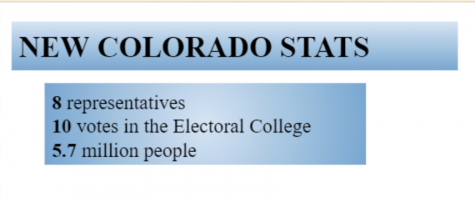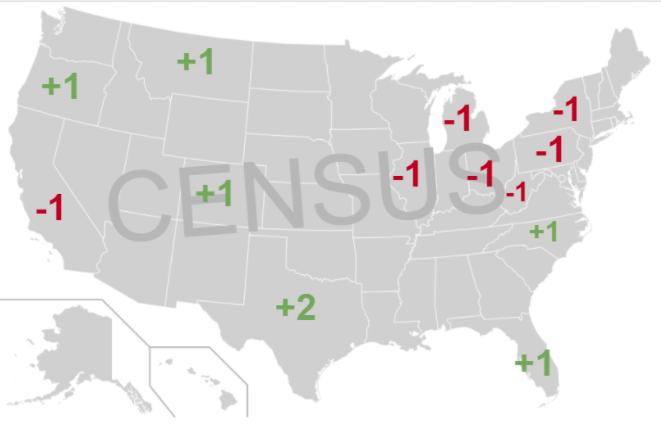The 2020 Census and Colorado’s Redistricting
The states losing seats after the 2020 Census are largely clustered in the Midwest and Tristate area.
On Monday, April 26, 2021, the Census Bureau released the results from the prolonged 2020 Census. Among the redistribution in the House of Representatives, Colorado gained a seat, which will be distributed within the state according to new legislation.
The House of Representatives (sometimes called the “lower” or “second” house) comprises 435 seats, a number last determined in 1929, when the population of the United States was 120 million. Every decade, the Census Bureau redistributes the seats based on the current population of each state. Seats in the House don’t just imply more power in Congress; they also signify more points in the electoral college, a quantity derived from a state’s total number of Congress members.
In 2018, Colorado voters passed Amendments Y and Z to the state constitution. The amendments concern redistricting or redrawing the lines of regions that vote for a representative for the House. Redistricting has long been a target of gerrymandering, which is when the political party in control draws the lines in total favor of their party. These districts can be racist and ignore common sense boundaries, like county lines or geographical barriers. In an effort to prevent gerrymandering, Amendment Y dictates that an independent commission made up of twelve people (four from each of the top two political parties and four independent attendants) will vote on approving any maps of redistricting in Colorado. The new data from the Census will result in the first use of this commission, just in time for the 2022 election.

Colorado’s population boom was surprising to no one. The state’s growth is attributed to the shift in the economy from mining and fracking to tourism and tech. In the past few years, Silicon Valley expats have come to Colorado in droves, and bring oodles of start-ups in the process, as well as the Boulder Google Offices. This influx not only influences housing prices but has also contributed to Colorado’s shift to the left. The state has gone from being solidly red in the 1980s to having voted blue for the past four presidential elections and has elected at least one Democratic senator since 2004. The denser population is correlated with more progressive politics, so the political trend is likely to continue into the future.
While this development looks like a gain for the Democratic Party, the redistribution at large is convoluted. California, Illinois and New York lost seats, while quickly growing Southern states like Florida and North Carolina gained ones, with Texas gaining two. And while more people usually means more leftist politics, new legislation has restricted access to voting. Texas currently has some of the most restrictive voting laws in the country. Meanwhile, New York lost a seat after coming up 89 people short, a fact that will surely result in a lawsuit. Since the Census results in redistricting in every state, the new data doesn’t ensure either party to be the majority in the House. That will only be seen with time.

Hannah (rhymes with fauna!) Cohen is ecstatic to be working on the Owl for her third and final year. She loves stories in all their forms, but she mostly has opinions on obscure podcasts and which New York Times opinion columnists are defacing the good name of journalistic analysis. When not busy with stumbling through sheet music, editing nonfiction for jGirls+ Magazine, or seeking out the cheapest bluegrass venue, Hannah enjoys wandering around the mountains with her friends and lovely labradoodle. Although she's slightly preferential to the sweeter, more robust taste of red grapes, she knows that the bliss of biting into a crunchy grape transcends color.


